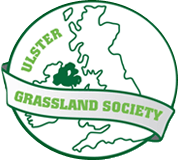Event Details
- Date: 14 Aug 2019
- Venue: Dyan Road, Caledon,
Ulster Grassland Society visit an efficient Co Tyrone suckler beef unit.
On Wednesday 14th August more than 100 grassland enthusiasts visited the farm of David and Joanne Wright in Caledon, Co Tyrone.
David and Joanne farm 140 acres with 50 spring calving cows and finish all cattle on the farm. The unit is in 2 blocks with 80 acres on the home farm and 60 acres at an outfarm. Steers are finished at around 22 months at approximately 400kg carcases and heifers are finished at around 24 months at approximately 350kg.
The farming system revolves around growing and utilising as much grass as possible, and conserving high quality silage for feeding to finishing cattle, store cattle and suckler cows for as short a period as conditions allow.
David took over the farm in 2003. At that stage there were no buildings, no grazing infrastructure and no livestock. David and Joanne have put a lot of effort into developing a simple, low input farming business based on top quality, productive suckler cows, finishing beef efficiently. Grazed grass and excellent quality silage are the major inputs.
Housing is focused on animal health and low labour input, with a long term programme of improving facilities to be completed soon with the addition of an upgraded handling unit.
All fields are soil sampled regularly. Lime, nitrogen, phosphorus, potassium and sulphur are all used strategically based on a nutrient plan underpinned by soil analysis results. A continuous programme of reseeding is undertaken. The decision to reseed an individual field is based mainly on the proportion of ryegrass in the sward, but factors also included are weed burden, soil analysis and whether any additional remedial drainage work might be required.
Cows and calves are split into two batches to run with Limousin and Simmental stock bulls and are grazed on a 3 day rotational paddock system, although stock may move between one and 4 days depending on grass growth, weather conditions and the practicalities of making paddocks to suit water supply. Finishing and store cattle are mostly grazed on an out-farm, again utilising a 3 day paddock system.
Turnout begins in February with younger stock, followed by cows and calves and then finishing cattle. Housing is the reverse, with finishing cattle coming in first, then cows and calves, with the lightest stores finishing off any grazing. Weather conditions permitting, the last cattle are housed in early November. All stock are finished on farm, with replacement heifers being retained from the best cows, based on calf growth rates (milking ability), fertility, and longevity. A zero tolerance policy for culling is in place for cows that offend on temperament, producing a healthy calf, calving within the planned calving period, feet or udder problems or cow size in relation to the size of calf produced.
David was very frank in his discussion of the economics of suckler beef production, confirming that efficient farms do have the potential to make a modest profit. Being technically efficient and delivering a good gross margin is essential but that control of fixed costs is important. While beef price is at a point where very few farmers can make a profit, ensuring animals sold meet the specifications ensures price can at least be maximised.
The main take home messages from this excellent visit were that while there are many factors to be taken into account when developing a profitable farm enterprise the most important on a suckler beef farm are
a. Genetics – keep only the best cows based on objective criteria
b. Grassland management – growing and utilising as much grass as possible is absolutely essential for livestock enterprise success.
The evening was concluded with discussions over an excellent supper provided by Banbridge based outdoor catering specialist “Simply Irresistible”.









